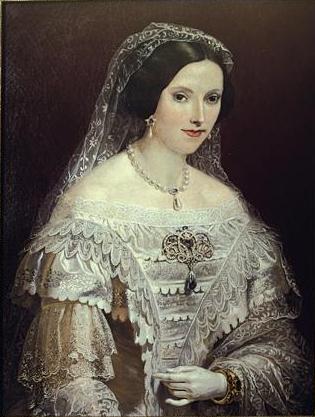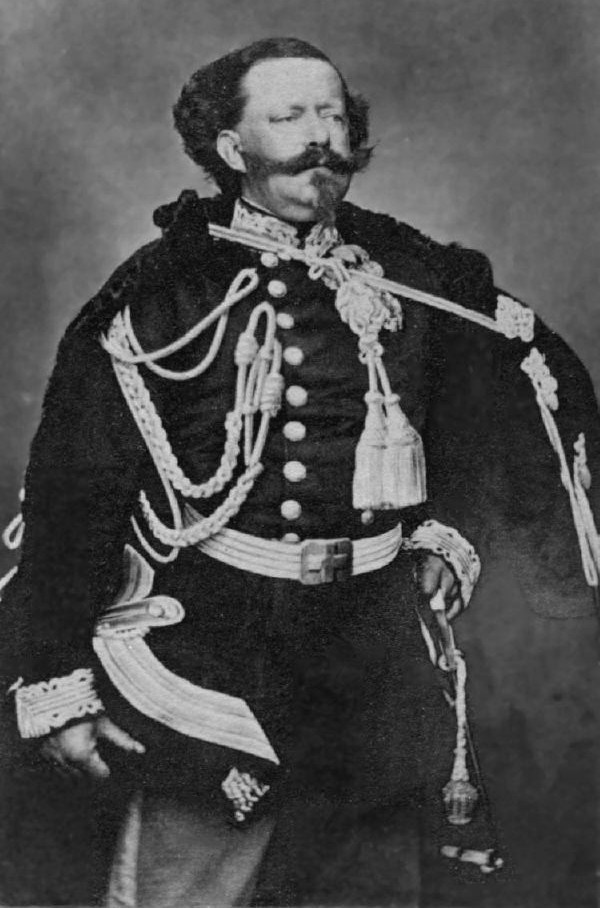|
Prince Umberto, Count Of Salemi
Prince Umberto of Savoy (22 June 1889 – 19 October 1918) was a member of the Aosta branch of the House of Savoy and was styled the Count of Salemi. Early life Umberto was born in Turin, the fourth son of Prince Amadeo of Savoy, Duke of Aosta, the only one by his second wife and niece Princess Maria Letizia Bonaparte (1866–1926) the daughter of Prince Napoléon and Princess Maria Clotilde of Savoy. His father, a former king of Spain, died when he was just a year old. He had three older half-brothers: the Duke of Aosta, the Count of Turin and the Duke of the Abruzzi. In 1908 Umberto began studies at the Naval Academy in Livorno. In May 1911, while still at the academy, he was accused of theft. His cousin King Victor Emmanuel III of Italy wanted him arrested, but his mother took him to Turin and challenged the king to carry out the arrest. In July Victor Emmanuel ordered that he be detained at the Castle of Moncalieri and then spend eighteen months aboard a man-of- ... [...More Info...] [...Related Items...] OR: [Wikipedia] [Google] [Baidu] |
Turin
Turin ( , Piedmontese: ; it, Torino ) is a city and an important business and cultural centre in Northern Italy. It is the capital city of Piedmont and of the Metropolitan City of Turin, and was the first Italian capital from 1861 to 1865. The city is mainly on the western bank of the Po River, below its Susa Valley, and is surrounded by the western Alpine arch and Superga Hill. The population of the city proper is 847,287 (31 January 2022) while the population of the urban area is estimated by Eurostat to be 1.7 million inhabitants. The Turin metropolitan area is estimated by the OECD to have a population of 2.2 million. The city used to be a major European political centre. From 1563, it was the capital of the Duchy of Savoy, then of the Kingdom of Sardinia ruled by the House of Savoy, and the first capital of the Kingdom of Italy from 1861 to 1865. Turin is sometimes called "the cradle of Italian liberty" for having been the political and intellectual centre ... [...More Info...] [...Related Items...] OR: [Wikipedia] [Google] [Baidu] |
Man-of-war
The man-of-war (also man-o'-war, or simply man) was a Royal Navy expression for a powerful warship or frigate from the 16th to the 19th century. Although the term never acquired a specific meaning, it was usually reserved for a ship armed with cannon and propelled primarily by sails, as opposed to a galley which is propelled primarily by oars. Description The man-of-war was developed in Portugal in the early 15th century from earlier roundships with the addition of a second mast to form the carrack. The 16th century saw the carrack evolve into the galleon and then the ship of the line. The evolution of the term has been given thus: The man-of-war design developed by Sir John Hawkins had three masts, each with three to four sails. The ship could be up to 60 metres long and could have up to 124 guns: four at the bow, eight at the stern, and 56 in each broadside. All these cannons required three gun decks to hold them, one more than any earlier ship. It had a maximum sai ... [...More Info...] [...Related Items...] OR: [Wikipedia] [Google] [Baidu] |
Adelaide Of Austria
Adelaide of Austria (Adelheid Franziska Marie Rainera Elisabeth Clotilde; 3 June 1822 – 20 January 1855) was Queen of Sardinia by marriage to Victor Emmanuel II of Sardinia, future King of Italy, from 1849 until 1855 when she died as a result of gastroenteritis. She was the mother of Umberto I of Italy. Biography Archduchess of Austria She was born at the Royal Palace of Milan to Archduke Rainer of Austria and his wife Princess Elisabeth of Savoy.Urban. Sylvanius: ''The Gentleman's Magazine'', 1855, p 303 Named ''Adelaide'', or known as ''Adele'' in the family, she held the title of Archduchess of Austria. Her father was the Viceroy of Lombardy-Venetia. Duchess of Savoy On 12 April 1842, at the Palazzina di Caccia di Stupinigi, she married Victor Emmanuel of Savoy. The marriage was used to cement relations between the House of Savoy and that of the House of Habsburg but was viewed by many people of the time to increase Austrian power in Italy. Victor Emmanuel was ... [...More Info...] [...Related Items...] OR: [Wikipedia] [Google] [Baidu] |
Victor Emmanuel II Of Italy
en, Victor Emmanuel Maria Albert Eugene Ferdinand Thomas , house = Savoy , father = Charles Albert of Sardinia , mother = Maria Theresa of Austria , religion = Roman Catholicism , image_size = 252px , succession1 = King of Sardinia and Duke of Savoy , reign1 = 23 March 1849 – 17 March 1861 , predecessor1 = Charles Albert , reg-type1 = , regent1 = , signature = Signatur Viktor Emanuel II..PNG Victor Emmanuel II ( it, Vittorio Emanuele II; full name: ''Vittorio Emanuele Maria Alberto Eugenio Ferdinando Tommaso di Savoia''; 14 March 1820 – 9 January 1878) was King of Sardinia from 1849 until 17 March 1861, when he assumed the title of King of Italy and became the first king of an independent, united Italy since the 6th century, a title he held until his death in 1878. Borrowing from the old Latin title '' Pater Patriae'' of the Roman emperors, the Italians gave him the epithet of ''Father of the Fatherland'' ( it, Pad ... [...More Info...] [...Related Items...] OR: [Wikipedia] [Google] [Baidu] |
Monte Grappa
Monte Grappa ( vec, Mónte Grapa) (1,775 m) is a mountain of the Venetian Prealps in Veneto, Italy. It lies between the Venetian plain to the south and the central alpine areas to the North. To the west, it is parted from the Asiago upland by the Brenta river, and to the east it is separated from the Cesen-Visentin massif by the Piave river. To the north lie Corlo lake and Feltre valley. In the past, the mountain was called ''Alpe Madre'' (''Mother Alp''), and is currently divided among three provinces: Vicenza to the west, Treviso to the south and Belluno to the northeast. It is the highest peak of a small massif, which also includes many other peaks such as Col Moschin, Colle della Berretta, Monte Asolone, Monte Pertica, Prassolan, Monti Solaroli, Fontana Secca, Monte Peurna, Monte Santo, Monte Tomatico, Meatte, Monte Pallon, and Monte Tomba. In September 2021, UNESCO announced that Monte Grappa would become one of 20 new biosphere reserves as part of their Man and the Biosp ... [...More Info...] [...Related Items...] OR: [Wikipedia] [Google] [Baidu] |
Spanish Flu
The 1918–1920 influenza pandemic, commonly known by the misnomer Spanish flu or as the Great Influenza epidemic, was an exceptionally deadly global influenza pandemic caused by the H1N1 influenza A virus. The earliest documented case was March 1918 in Kansas, United States, with further cases recorded in France, Germany and the United Kingdom in April. Two years later, nearly a third of the global population, or an estimated 500 million people, had been infected in four successive waves. Estimates of deaths range from 17 million to 50 million, and possibly as high as 100 million, making it one of the deadliest pandemics in history. The pandemic broke out near the end of World War I, when wartime censors suppressed bad news in the belligerent countries to maintain morale, but newspapers freely reported the outbreak in neutral Spain, creating a false impression of Spain as the epicenter and leading to the "Spanish flu" misnomer. Limited historical epidemiologic ... [...More Info...] [...Related Items...] OR: [Wikipedia] [Google] [Baidu] |
New York Times
''The New York Times'' (''the Times'', ''NYT'', or the Gray Lady) is a daily newspaper based in New York City with a worldwide readership reported in 2020 to comprise a declining 840,000 paid print subscribers, and a growing 6 million paid digital subscribers. It also is a producer of popular podcasts such as '' The Daily''. Founded in 1851 by Henry Jarvis Raymond and George Jones, it was initially published by Raymond, Jones & Company. The ''Times'' has won 132 Pulitzer Prizes, the most of any newspaper, and has long been regarded as a national "newspaper of record". For print it is ranked 18th in the world by circulation and 3rd in the U.S. The paper is owned by the New York Times Company, which is publicly traded. It has been governed by the Sulzberger family since 1896, through a dual-class share structure after its shares became publicly traded. A. G. Sulzberger, the paper's publisher and the company's chairman, is the fifth generation of the family to head the p ... [...More Info...] [...Related Items...] OR: [Wikipedia] [Google] [Baidu] |
Cavalry
Historically, cavalry (from the French word ''cavalerie'', itself derived from "cheval" meaning "horse") are soldiers or warriors who Horses in warfare, fight mounted on horseback. Cavalry were the most mobile of the combat arms, operating as light cavalry in the roles of reconnaissance, Screening (tactical), screening, and skirmisher, skirmishing in many armies, or as heavy cavalry for decisive shock attacks in other armies. An individual soldier in the cavalry is known by a number of designations depending on era and tactics, such as cavalryman, Equestrianism, horseman, trooper (rank), trooper, cataphract, knight, hussar, uhlan, mamluk, cuirassier, lancer, dragoon, or horse archer. The designation of ''cavalry'' was not usually given to any Military animal, military forces that used other animals for mounts, such as Camel cavalry, camels or War elephant, elephants. Infantry who moved on horseback, but dismounted to fight on foot, were known in the early 17th to the early 18t ... [...More Info...] [...Related Items...] OR: [Wikipedia] [Google] [Baidu] |
Catania
Catania (, , Sicilian and ) is the second largest municipality in Sicily, after Palermo. Despite its reputation as the second city of the island, Catania is the largest Sicilian conurbation, among the largest in Italy, as evidenced also by the presence of important road and rail transport infrastructures as well as by the main airport in Sicily, fifth in Italy. It is located on Sicily's east coast, at the base of the active volcano, Mount Etna, and it faces the Ionian Sea. It is the capital of the 58-municipality region known as the Metropolitan City of Catania, which is the seventh-largest metropolitan city in Italy. The population of the city proper is 311,584, while the population of the Metropolitan City of Catania is 1,107,702. Catania was founded in the 8th century BC by Chalcidian Greeks. The city has weathered multiple geologic catastrophes: it was almost completely destroyed by a catastrophic earthquake in 1169. A major eruption and lava flow from nearby Mount Etna ... [...More Info...] [...Related Items...] OR: [Wikipedia] [Google] [Baidu] |
Royal Italian Army
The Royal Italian Army ( it, Regio Esercito, , Royal Army) was the land force of the Kingdom of Italy, established with the proclamation of the Kingdom of Italy. During the 19th century Italy started to unify into one country, and in 1861 Manfredo Fanti signed a decree creating the Army of the Two Sicilies. This newly created army's first task was to defend against the repressive power in southern Italy. The Army of the Two Sicilies combated against criminals and other armies during this time of unification. After the monarchy ended in 1946, the army changed its name to become the modern Italian Army (). Within the Italian Royal Army are the elite mountain military corporals called, the Alpini. The Alpini are the oldest active mountain infantry in the world. Their original mission was to protect and secure Italy's northern mountain border that aligns with France and Austria. This group emerged in World War I when a three-year campaign was fought against the Austro-Hungarian ... [...More Info...] [...Related Items...] OR: [Wikipedia] [Google] [Baidu] |

.jpg)


.jpg)

.png)
